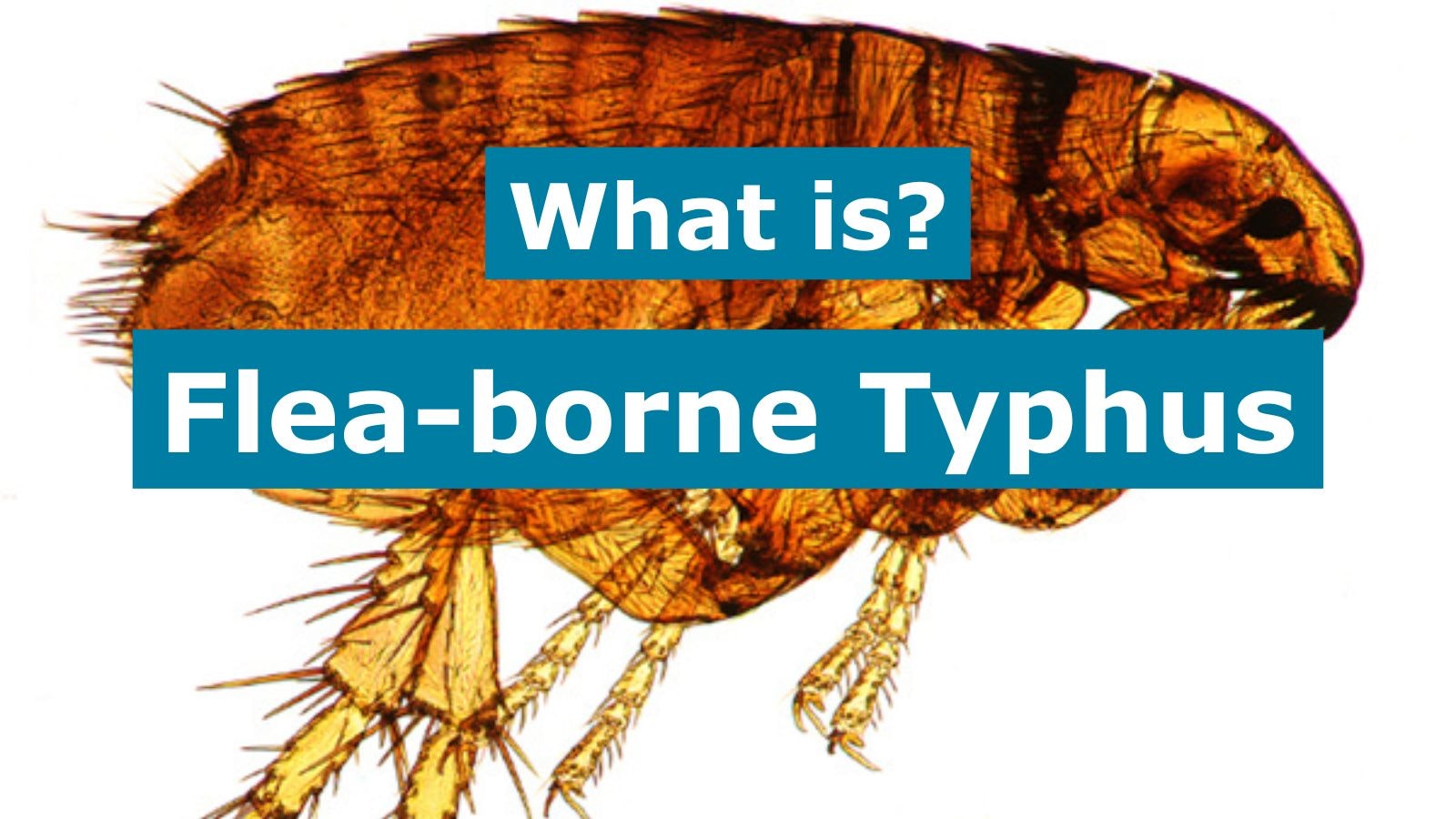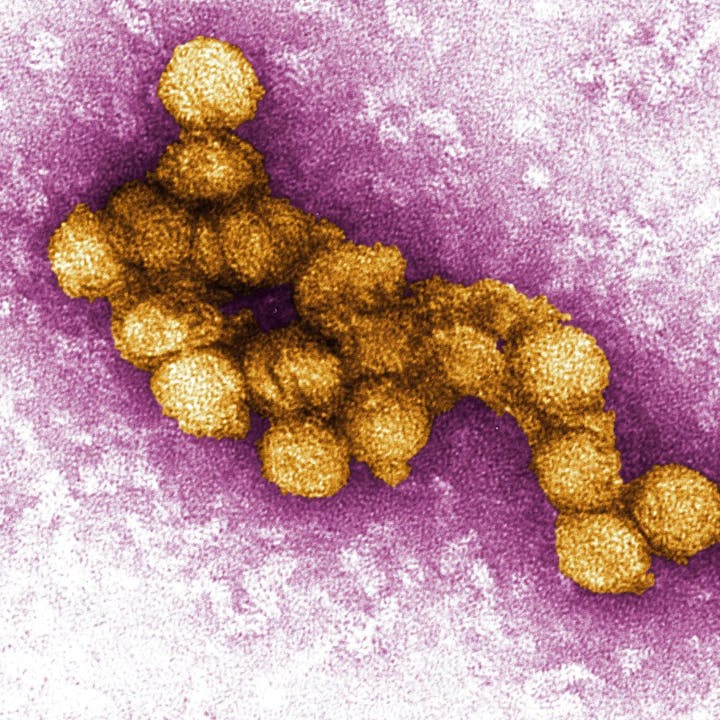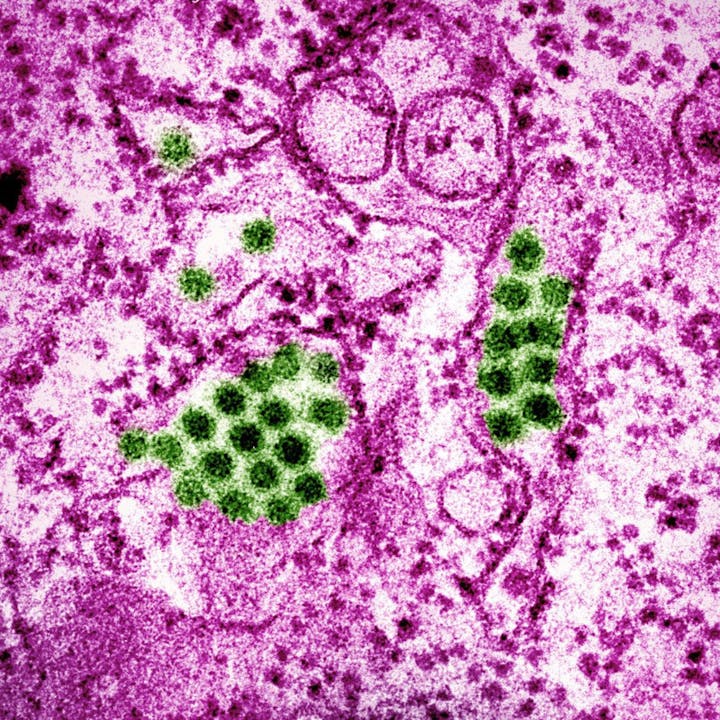Fleas and Flea-borne Typhus

Flea-borne (murine) typhus, is a disease caused by a bacteria called Rickettsia typhi. Flea-borne typhus is spread to people through contact with infected fleas. Fleas become infected when they bite infected animals, such as rats, cats, or opossums.
Jump on Typhus Before it Jumps on You!
If wildlife or pets with no flea control come in close contact with people, the chances of getting sick from a flea bite is higher.
Flea-borne typhus is considered endemic (always present) in areas of Los Angeles and Orange counties, but cases are also occasionally reported from other parts of California.

How do you get flea-borne typhus?
When an infected flea bites a person or animal, the bite breaks the skin, causing a wound. Fleas poop when they feed. The poop (also called flea dirt) can then be rubbed into the bite wound or other wounds causing infection. People can also breathe in infected flea dirt or rub it into their eyes. This bacteria is not spread from person to person.

There is no vaccine to prevent flea-borne typhus.
The key to preventing flea-borne typhus is to avoid direct contact with fleas.
KEEP FLEAS AWAY. Keep pets, yards, and homes free from fleas. Oral and topical flea medication is widely available for pets. Yards and homes should also be kept flea-free with flea-control mist, sprays, and powders.
KEEP YARDS AND HOMES FREE FROM OPOSSUMS AND OTHER WILD ANIMALS. Yards and homes should be kept clean and in good repair to keep animals from entering and living in these areas. Make sure there are no cracks or nesting areas where animals can access and live. Lawns should be trimmed and cleared of debris or other materials. Trash cans and other food sources (accessible pet food) can attract feral cats, opossums and other animals.
Symptoms of flea-borne typhus begin within 2 weeks after contact with infected fleas or flea dirt. However, people may not know they have been bitten by a flea or exposed to flea dirt so tell your healthcare provider about time spent outdoors or contact with animals. Signs and symptoms may include:
- Fever and chills
- Body aches and muscle pain
- Loss of appetite
- Nausea
- Vomiting
- Stomach pain
- Cough
- Rash (typically occurs around day 5 of illness)
Severe illness is rare and most people recover completely, sometimes without treatment. Untreated disease can cause severe illness and damage to one or more organs, including the liver, kidneys, heart, lungs, and brain.
Flea-borne typhus is diagnosed through a combination of clinical symptoms and a blood test.
In the United States, opossums and other small mammals can carry the typhus bacteria. Rat fleas (Xenopsylla cheopis) and cat fleas (Ctenocephalides felis) are most commonly associated with disease transmission. Fleas may become infected when they feed on these animals and then can transmit the bacteria to humans, pet dogs, and cats.
.png?ixlib=rb-1.1.0&w=2000&h=2000&fit=max&or=0&s=c54f1f0459ddbdb11423b3edda035969)
FAQs:
Where can I get more information on flea-borne typhus?
- The U.S. Centers for Disease Control and Prevention typhus website
- Los Angeles County Public Health Department typhus information page, which includes outbreak updates





